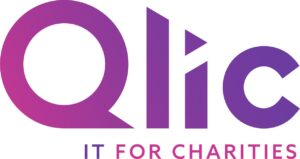No organisation wants to see money go out of the window. As the availability of IT systems is directly linked to business performance, network downtime poses a great threat to an organisation’s IT operations and can seriously impede its success. With the ever-changing demands of IT, preventing network downtime is becoming more challenging. As organisations in today’s age are increasingly IT reliant, they expose themselves to more risks which they are unaware of. Network downtime is like closing the door to your customers, having a flow-on effect on every facet of a business’ operations. There is no single cause of network downtime. It can occur in the form of component failures, software failures, system outages, natural disasters and human errors.
Network downtime impacts all companies regardless of size, having tremendous consequences which far surpass an inconvenience. The true cost of network downtime will vary depending on the nature of an organisation’s business operations, the size of the organisation and how much it relies on IT systems. The severity will also depend on the time of day, as downtime occurring during core service hours will cause a more significant financial impact. Although smaller organisations will face more serious ramifications, all sized organisations risk losing customers if their services are inaccessible. As well as affecting your bottom line instantly, network downtime can have long-term consequences. The detrimental costs which companies experiencing network downtime are subject to include:
- Loss of revenue. There is no doubt that network downtime is tied directly to financial losses. According to sources, IT downtime costs businesses in the UK an average of £3.6 million every year. This is a result of lost sales, business, wages and labour costs, which can ultimately jeopardise future profits.
- Loss of productivity. Network downtime directly affects the productivity of a company, particularly those which are bigger in size, since there will be a greater number of employees unable to carry out work. Sources indicate that 545 hours of staff productivity are lost annually because of IT outages.
- Loss of valuable data. This is one of the most threatening potential consequences of network downtime.
- Employee time diverted from other tasks to get the systems running again. This could lead to potential employee overtime, which will also incur extra costs to the organisation.
- Emergency maintenance fees.
- Additional repair and recovery costs.
- Lower employee morale.
- Damaged reputation.
- Customer dissatisfaction. Any organisation which has customers relying on access for purchases, support, services or information stands to disappoint its customers, meaning it is likely to receive several complaints.
- Decrease in customer loyalty.
- Lack of confidence and trust from current and potential investors. This could lead to the loss of business to other competitors.
- Inability to meet regulatory requirements.
Understanding what the cost of downtime means for your organisation will enable you to make better informed decisions on IT resilience. With technology becoming more complex and unpredictable, network downtime is unavoidable. However, whilst occasional periods of network downtime are inevitable for organisations, the length and frequency at which they occur can be very costly. In order to ensure business continuity, it is essential to have effective back-up processes and recovery plans in place to help reduce the costly threat of network downtime. If an organisation is not prepared or does not have the skills internally to quickly resolve network downtime, the risks it poses will be much larger.
At Qlic, we are on hand to monitor, restore and restart your IT systems so that you can provide a guaranteed reliable service. Our IT support help desk is available 24 hours a day to ensure that you are always available to your clients. To find out more about what we can offer your organisation, please contact us on [email protected] or call 02039043464.






